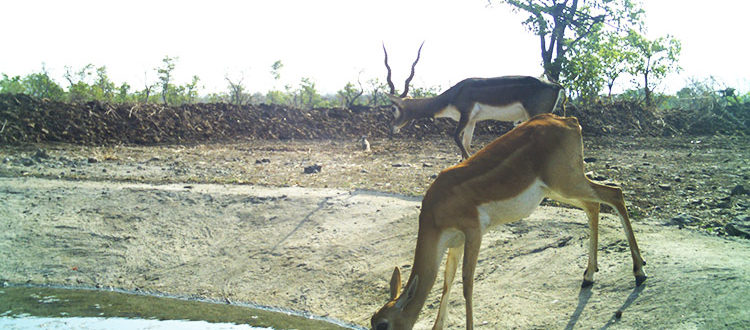Waterholes for Wildlife: How a Rapid Action Project Addressed a Hot Weather Crisis in Maharashtra
[acx_slideshow name=”Muniya Waterholes 30072017″]
Muniya Conservation Reserve, Maharashtra, August 1, 2017: Water is life, it’s said, and while a lot of humans seem not to have got the message, most wild creatures instinctively organise the daily and seasonal rhythms of their lives around its availability.
Surface water repositories play a critical role in Protected Areas and wildlife corridors, particularly in the hot months. They maximise water retention in the soil and are crucial to ecosystem health, apart, of course, from becoming focal points of wildlife movement.
Thirst can be one of the major causes of wildlife mortality in the summer months, either directly or by driving animals to stray out of their natural habitat and into conflict with humans. And while the seasonal depletion of water bodies is a natural phenomenon in certain landscapes, it has, in recent years, been accentuated by climate change and anthropogenic alterations to habitat.
Surface water is at a premium in the Muniya Conservation Reserve, with the four waterholes located here completely drying up in the summer months.
Located in the Umred-Bhivapur taluk of Nagpur district, Maharashtra, Muniya Conservation Reserve is a potential wildlife corridor (a natural habitat linkage allowing for wildlife movement between two larger forest patches) connecting Bor Tiger Reserve in the Umred-Karhandla Wildlife Sanctuary with Tadoba-Andheri Tiger Reserve. It is spread over 1700 hectares of protected forest and about 710 hectares of reserve forest in the North Umred Range of Nagpur Forest Division, and sees regular movement of wildlife, including threatened/near threatened species like leopards and blackbucks, and the critically endangered Great Indian Bustard.
Surface water is at a premium in the corridor area, with the four waterholes located here completely drying up in the summer months. In May this year, Wildlife Trust of India’s Wild Aid division initiated a Rapid Action Project (RAP) to address this issue. Over a period of three months, 200,000 litres of water were provided to replenish these four waterholes and prevent them from drying out. Camera traps were also placed around the waterholes to record animal presence.
The RAP’s success has been clear to see through the camera trap images, with a wealth of wildlife species including the small Indian civet, blackbuck, langur, jungle cat, wild pig, Indian hare, grey mongoose, blue bull, Indian fox, Indian grey wolf and several bird species being spotted during the course of the project.









